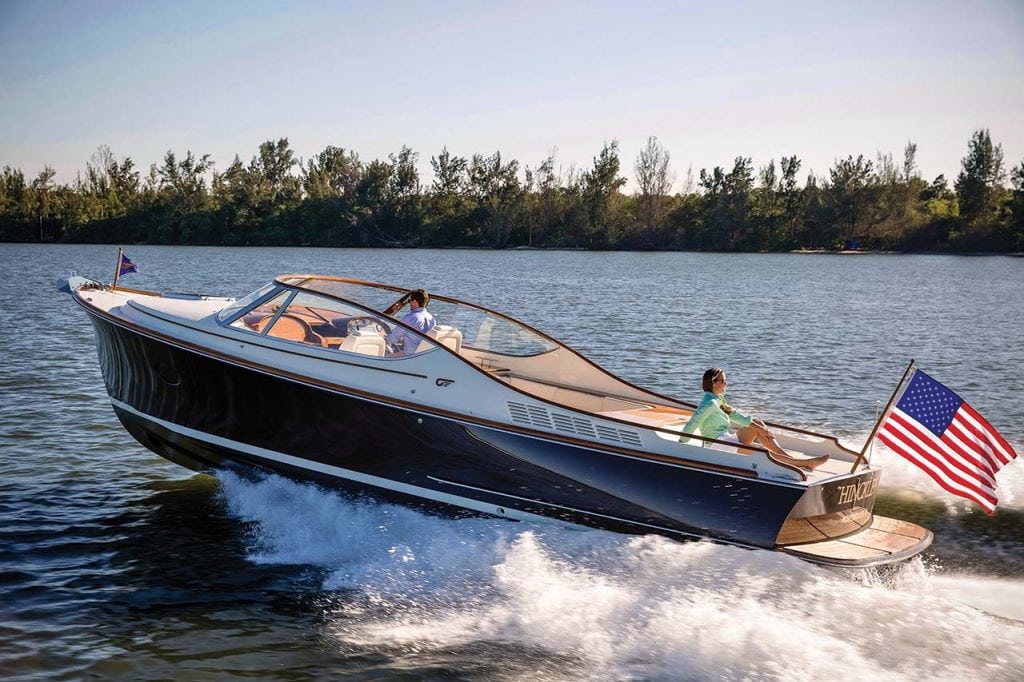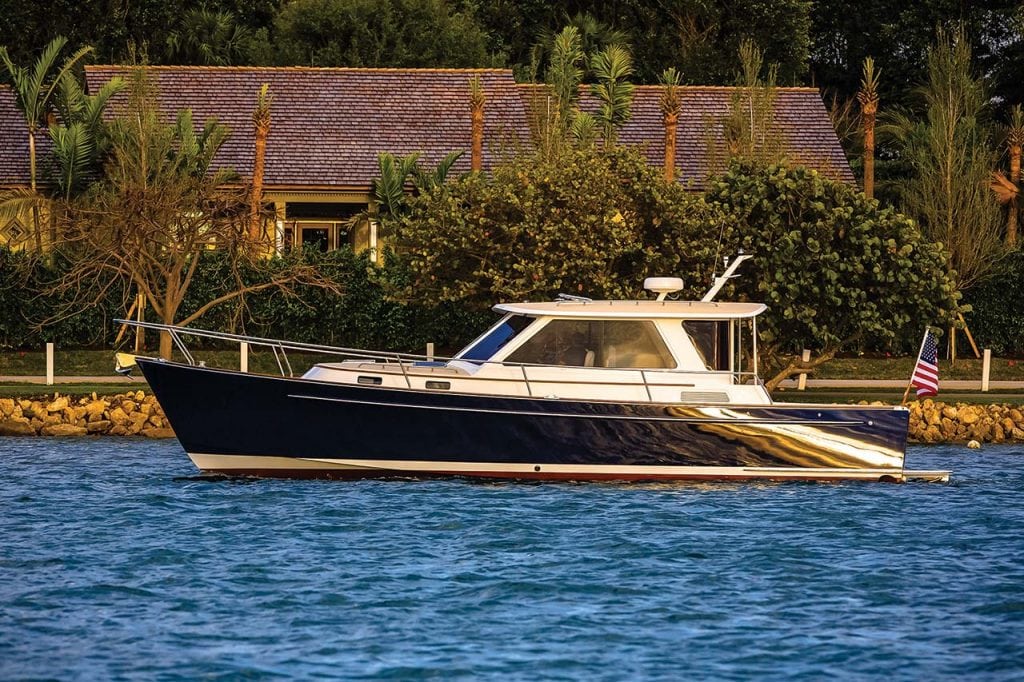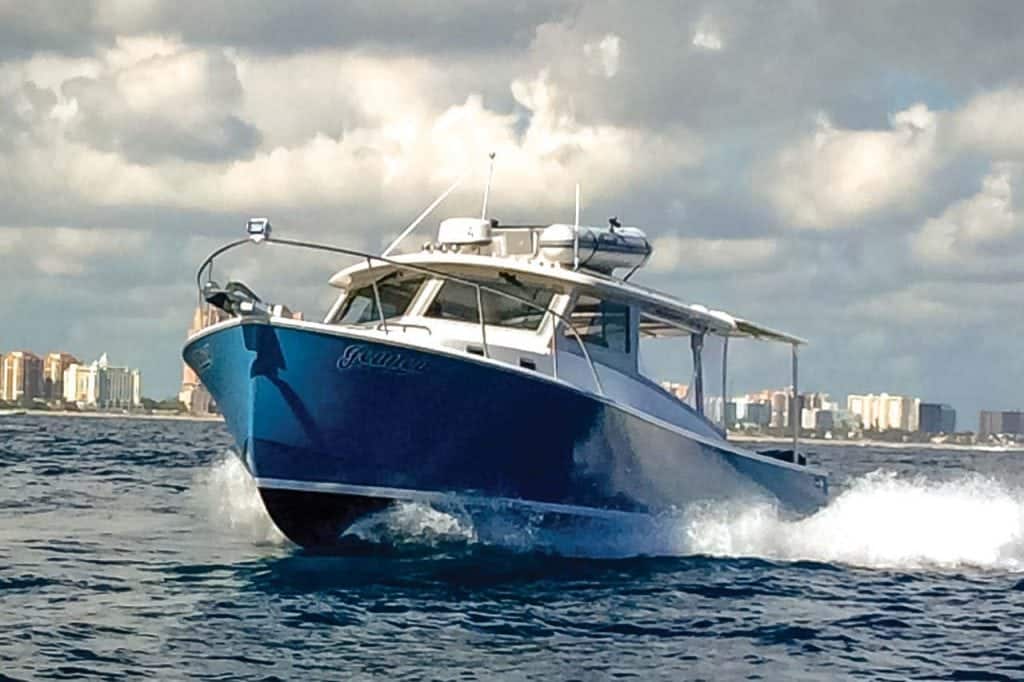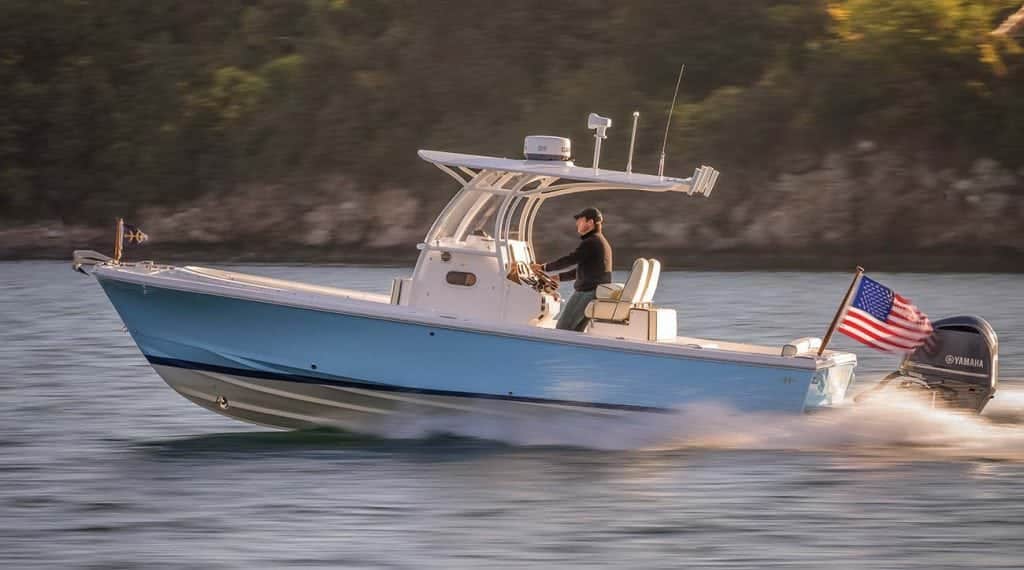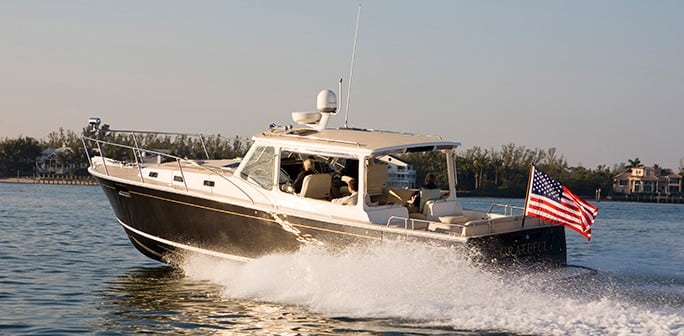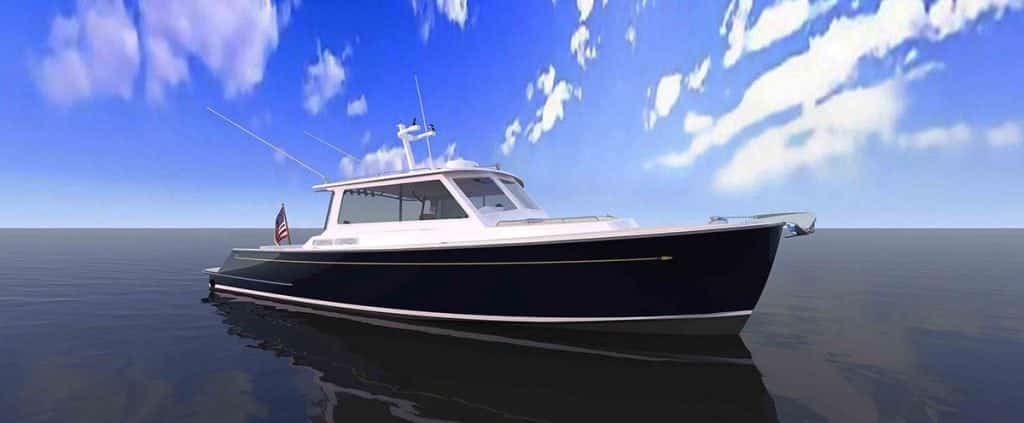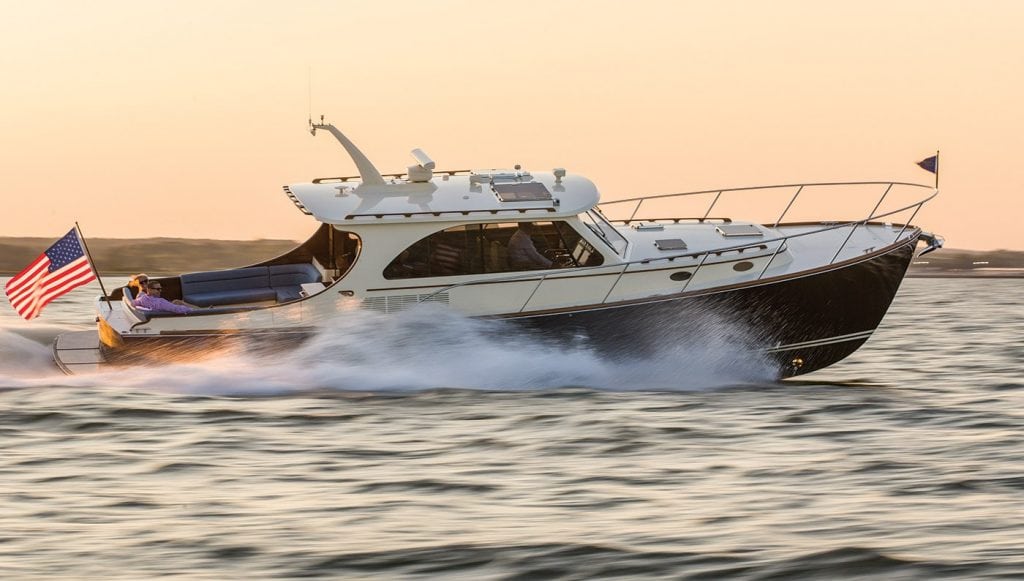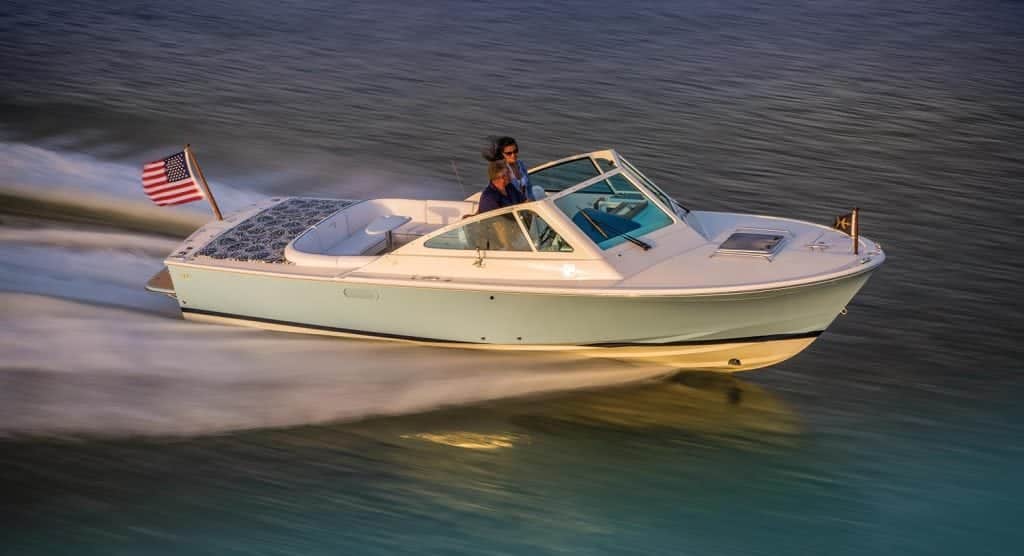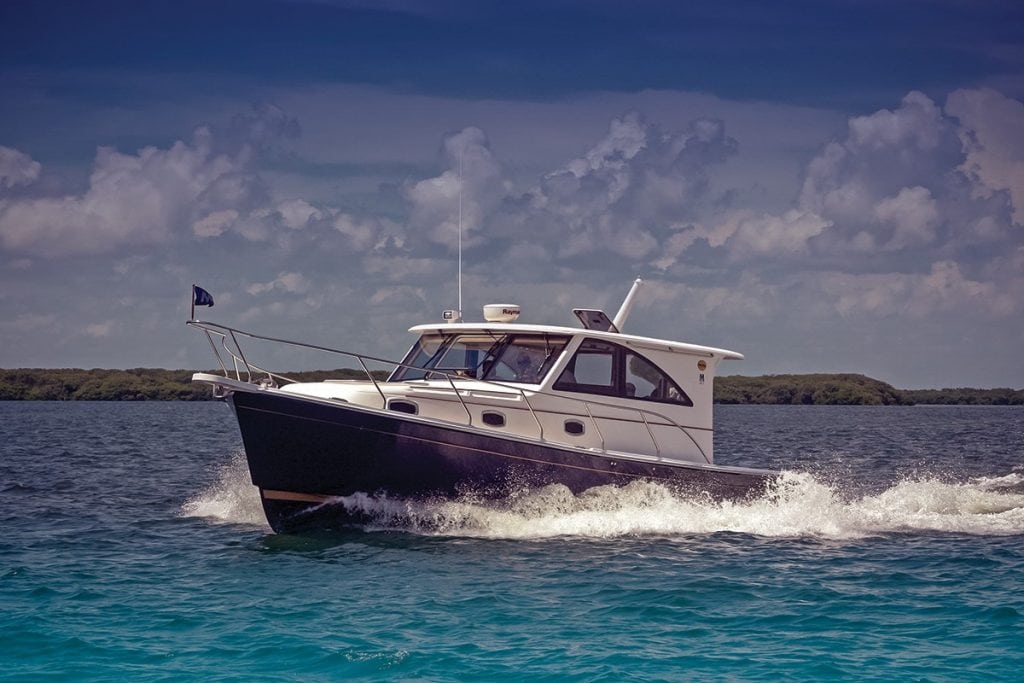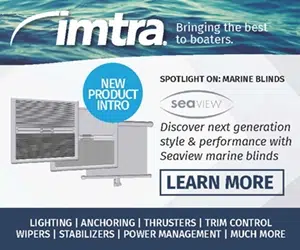Downeast
They really aren’t lobster boats anymore. It’s hard to imagine anyone pulling traps from the well-varnished cockpit of a new Downeast model. However, today’s boats have the lobster boat heritage—the low profile, the long shear, the tumblehome, and, above all, the sea-keeping ability. View our collection of Downeast boat reviews to find the right one for you.
Hinckley 34R
The newest model from Hinckley, a 34-foot runabout, (Hinckley 34R) is the newest in the iconic builder’s line of elegant,...
Read moreDetailsBruckmann Abaco 40
They don’t come much more traditional—or much better looking—than the Bruckmann Abaco 40, a single-diesel, straightforward, solid Downeast boat with...
Read moreDetailsEastport 32 OBX
With classic Chesapeake Bay deadrise lines, the new Eastport 32 OBX (outboard express) traces its heritage to a waterman’s working...
Read moreDetailsHunt 26CC
The Hunt 26CC (25’ LOA, 9’ beam) is a sporty center console that doesn’t skimp on sophistication. With plush social...
Read moreDetailsMJM Yachts: The World’s Most Fuel Efficient Powerboats
MJM Yachts: World’s Most Fuel Efficient Powerboats The best indicators of powerboat cruising performance are: (1) fuel efficiency expressed in...
Read moreDetailsZurn/NEB 38
Conceived for fishing and diving, Zurn Yacht Design’s Zurn/NEB 38, expected for a February 2016 launch, is sure to grab...
Read moreDetailsHinckley Talaria 43
Proportional Perfection Hinckley Yachts launches yet another winning addition to their iconic Picnic Boat line-up. With its new Talaria 43, Hinckley...
Read moreDetailsHunt Harrier 25 Sport
This beauty handles like a high-end performance race car. The only problem with the new Hunt Harrier 25 Sport—and this is...
Read moreDetailsMarlow Mainship 37
Dependable Design The Marlow Mainship 37's rugged construction and systems are based on proven big-yacht techniques. David Marlow’s considerable influence...
Read moreDetailsDuffy 29H
Duffy 29H Duffy hulls have been wholly proven over the years. Often described as boats with great seakeeping abilities, this...
Read moreDetails

